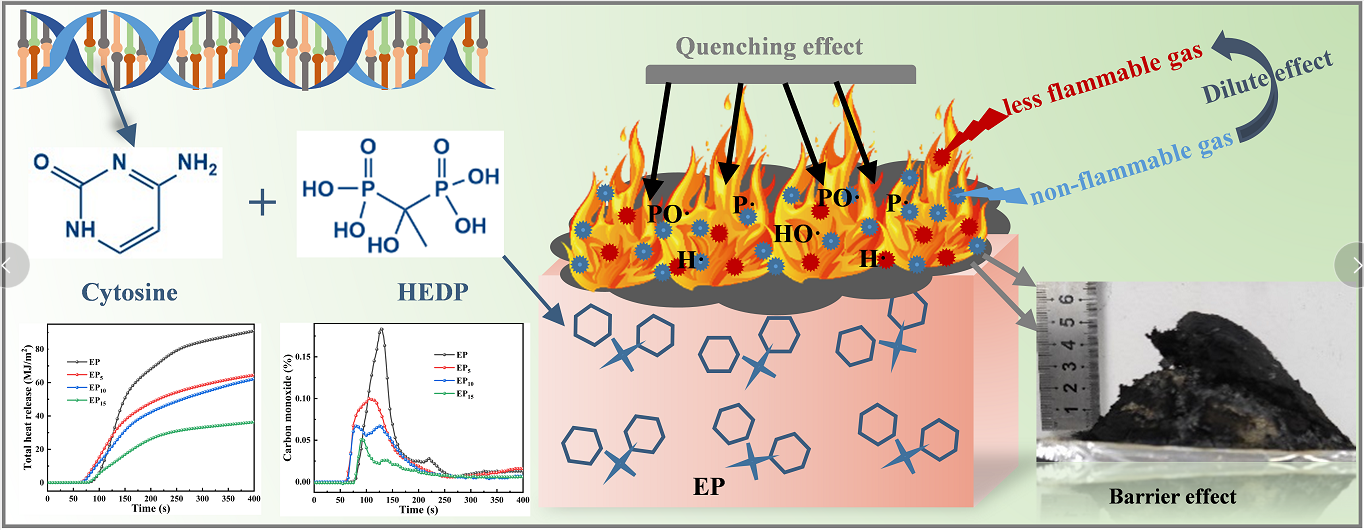 Open Access
Open Access
ARTICLE
Facile Synthesis of a Novel Bio-Based P-N Containing Flame Retardant for Effectively Reducing the Fire Hazards of Epoxy Resin
1
College of Materials Science and Engineering, Chongqing University, Chongqing, 400044, China
2
Fujian Provincial Key Laboratory of Functional Materials and Applications, School of Materials Science and Engineering, Xiamen
University of Technology, Xiamen, 361024, China
3
State Key Laboratory of Fire Science, University of Science and Technology of China, Hefei, 230026, China
* Corresponding Authors: Hongyu Yang. Email: ; Yao Yuan. Email:
(This article belongs to the Special Issue: Bio-based Halogen-free Flame Retardant Polymeric Materials)
Journal of Renewable Materials 2022, 10(10), 2639-2654. https://doi.org/10.32604/jrm.2022.019491
Received 27 September 2021; Accepted 22 November 2021; Issue published 08 June 2022
Abstract
In this work, a bio-based flame retardant (Cy-HEDP) was synthesized from cytosine and HEDP through a facile salt-forming reaction and embedded into epoxy matrix to improve the flame retardancy and smoke suppression performance. The product Cy-HEDP was well characterized by FTIR, 1 H and 31P NMR and SEM tests. On the basis of the results, by adding 15 wt% Cy-HEDP, the EP15 can pass UL-94 V-0 rating, and the total smoke production (TSP) as well as total heat release (THR) can be decreased by 61.05% (from 22.61 to 8.7 m2 /m2 ) and 39.44% (from 103.19 to 62.50 MJ/m2 ) in comparison to the unfilled EP, reflecting the attenuated smoke toxicity and impeded heat generation. According to the analysis results of residual char, it can be concluded that Cy-HEDP possessed the ability to promote the formation of continuous and dense char layers, which would be a physical barrier to insulate oxygen and prevent heat feedback during the combustion of EP. This work provide inspiration towards developing bio-based flame retardant, probably extending the prospects to other polymeric material system.Graphic Abstract

Keywords
Cite This Article
 Copyright © 2022 The Author(s). Published by Tech Science Press.
Copyright © 2022 The Author(s). Published by Tech Science Press.This work is licensed under a Creative Commons Attribution 4.0 International License , which permits unrestricted use, distribution, and reproduction in any medium, provided the original work is properly cited.


 Submit a Paper
Submit a Paper Propose a Special lssue
Propose a Special lssue View Full Text
View Full Text Download PDF
Download PDF Downloads
Downloads
 Citation Tools
Citation Tools